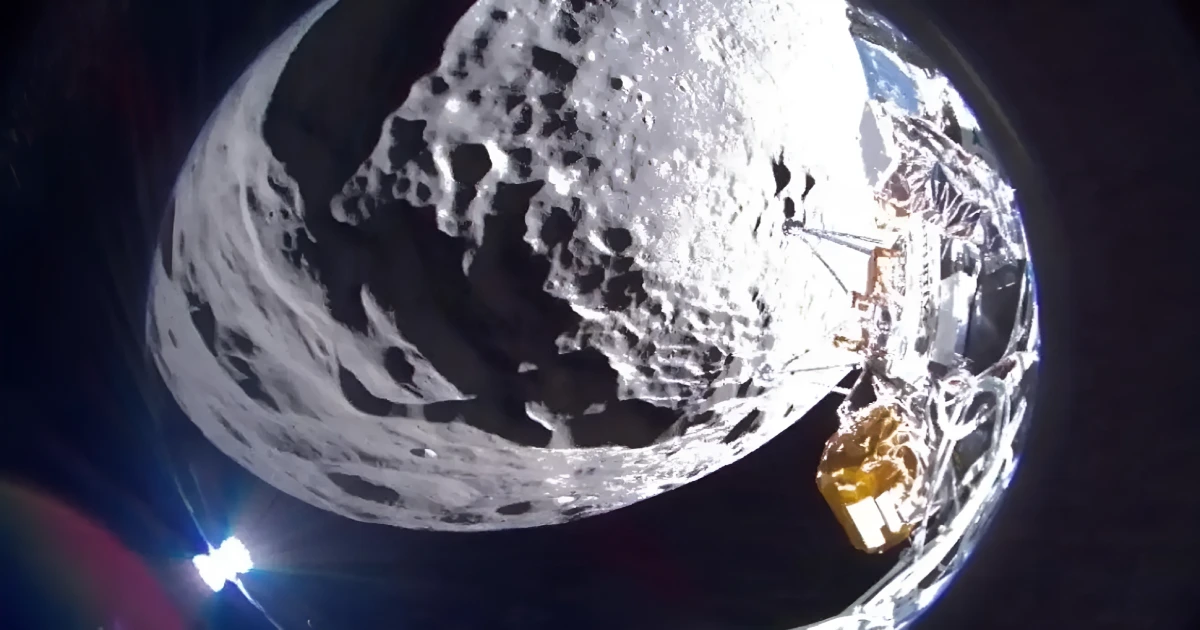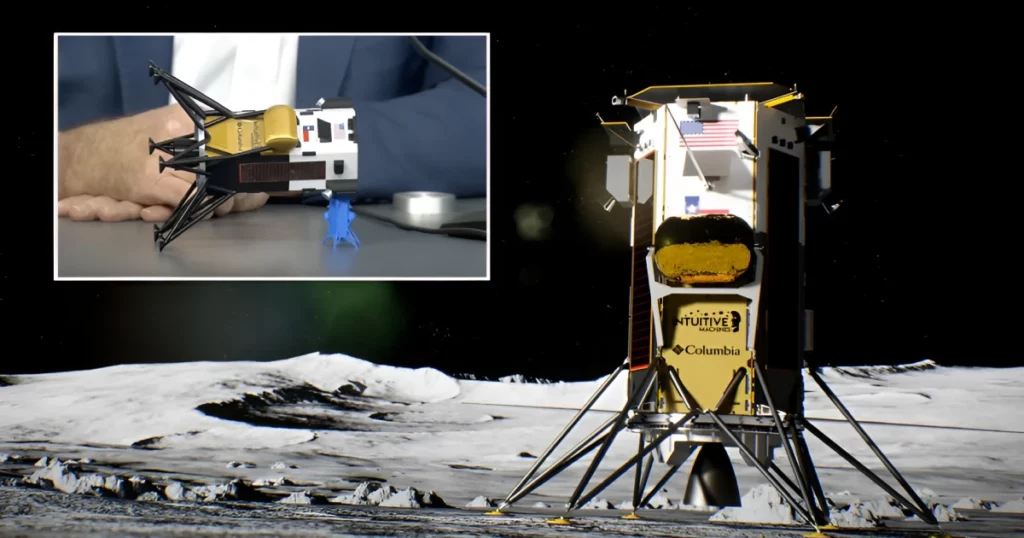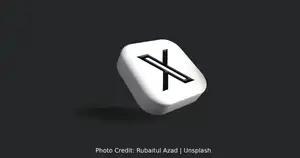
Intuitive Machines’ lunar lander makes ‘spicy’ touchdown
One of the lander’s legs may have become snagged on the surface during its descent toward the south polar region, according to Intuitive Machines.
Intuitive Machines’ private lander, Odysseus, had a bit of a rough landing on the Moon on Thursday, but it’s still operational and engineers are working to gather more data on its position.
Odysseus landed on the Moon on Thursday, overcoming a glitch that could have prevented it from touching down safely. However, the landing was not entirely smooth, and the lander ended up on its side.
“We thought we were upright yesterday,” said Intuitive Machines CEO Steve Altemus. “But when we worked through the night to get other telemetry data, we noticed that the tank residuals are in this direction [pointing downwards], and that’s what tells us the orientation of the vehicle.”

Despite the less-than-perfect landing, Odysseus is still able to receive sunlight from its solar panels and all of its payloads are facing away from the surface and could therefore still operate.
Intuitive Machines is still waiting on more data from Odysseus, but they have been able to secure a faint signal from the lander. Some of the antennas that the lander is designed to use to communicate with Earth are pointed downward, which is limiting the mission’s ability to transmit data.
Odysseus is part of NASA’s Commercial Lunar Payload Services (CLPS) initiative, which aims to have a constant flow of private landers headed to the Moon to deliver government-owned and commercial payloads.
“As landers come down, we would ideally like to have them come straight down,” said Prasun Desai, deputy associate administrator of the Space Technology Mission Directorate at NASA. “But because there are errors in the operations of the system, you wind up going laterally…[we’re trying to] get an understanding of that lateral movement so that the system can counteract that and zero out that lateral motion to come straight down.”
Odysseus is designed to operate on the lunar surface for around a week, or until the Sun sets on the Moon’s south polar region. Intuitive Machines is hoping that the lander’s solar panels will be able to receive enough sunlight in their current position to power the lander through the coming days.






